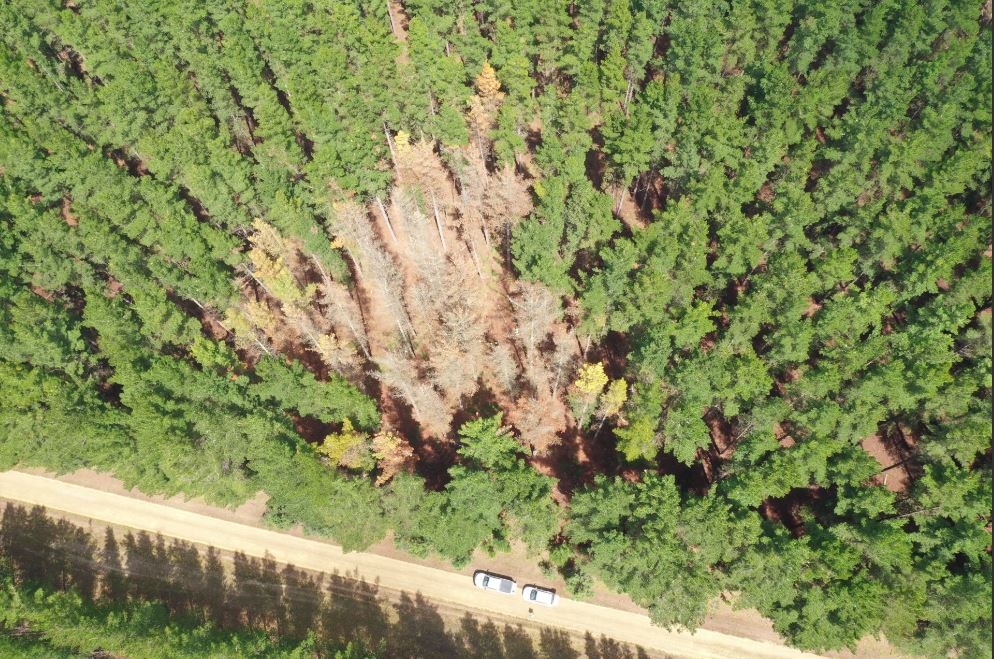
Drone image shows the extent of damage from a lightning strike in a stand of Pinus Radiata near Mount Gambier. Photo Marcio DeSilva (Flinders University).
Flinders University experts have been awarded almost $1.4 million in funding to refine special satellite surveillance software and drone coverage in an innovative forestry research project.
The two-year College of Science and Engineering project, entitled ‘Evaluation of remote sensing approaches for plantation health surveillance,’ is research funded by the federal and state governments through the Mount Gambier Centre of the National Institute for Forest Products Innovation (NIFPI).

David Bruce, Flinders University Associate Professor in Geospatial Information Systems (GIS), says the project will use high performance ‘super computers’ to process satellite imagery to provide early warning for plantation foresters across Australia of trees that are poorly performing.
“By analysing satellite imagery, we can find a range of problems caused by disturbances ranging from disease, water logging, poor management, drought or storms by statistically comparing patches of trees against all other trees in the same species age-class, and by looking at the temporal satellite record,” he says.
“We will also use high resolution satellite data collection over patches of poorly performing trees and validate our analysis with some low-level airborne observations by aircraft and drones at specific locations.”
The Flinders team includes remote sensing expert Associate Professor Bruce and PhD Marcio DaSilva, who first worked on the satellite data collection of Kangaroo Island bushfire damage. With computer programmer Michael Hillman, they have worked for more than 18 months with CSIRO experts testing algorithms on desktop computers then scaling up to cloud computing environments.

Partners in the $1.38 million research project include experts from the Green Triangle Forest Health Group, NIFPI and Growers Research Advisory Committee, Forest Corporation NSW, the NSW Department of Primary Industries, UniSA and many forest companies in Australia.
Eight research projects worth $6 million will receive funding in the latest round of grants.
“This will support ongoing research careers in the forest and wood products sectors, while more broadly supporting forestry jobs of the future,” says Federal Minister for Agriculture, Fisheries and Forestry, Murray Watt.
“The third round of projects will play an important role in exploring and facilitating innovation in areas such as forest management, worker safety, advanced remote sensing, forest water use, tree breeding genetics and optimising resource utilisation.”
The 2022-2023 October Federal Budget committed $100 million over five years for an expanded Australia-wide NIFPI to support research and development to address national challenges in the forest and wood products industries.
